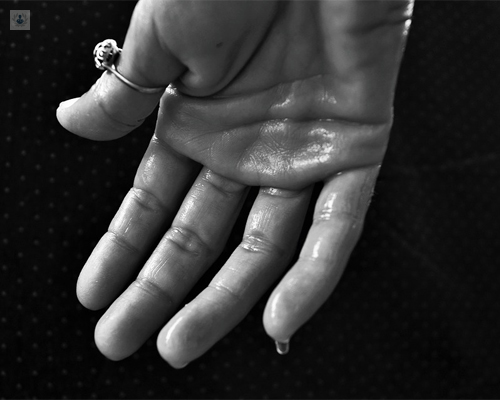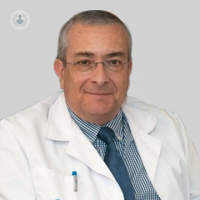Hyperhidrosis treatment for excessive sweating
Written by:What is hyperhidrosis and what generates it?
Sweat is a physiological mechanism that the body has to regulate the temperature. When this sweating is greater than it should be, we usually talk about hyperhidrosis. We can say that there are two major types of hyperhidrosis: hyperhidrosis secondary to some pathological processes, tumors, infections, et cetera; and the primary hyperhidrosis that is what concerns us at this time. The most important areas of involvement are the palms of the hands, the soles of the feet and the armpits. This primary hyperhidrosis seems to be mediated by the autonomic nervous system, specifically the sympathetic autonomic nervous system, and by excessive hyperexcitation of this system excessive sweating is produced in the hands and other parts of the body.

Is the operation a definitive solution?
This primary hyperhidrosis, when it becomes really annoying for the patient, has various forms of treatment. Conservative treatments, usually directed by dermatologists, such as iontophoresis, and which may be useful in mild or moderate cases. In more severe cases you can also use botulinum toxin, which produces a stop of palmar hyperhidrosis during a season of four, five or six months, although it has the problem that it is temporary and you have to repeat the doses. For severe palmar hyperhidrosis with poor control with conservative means, the technique of bilateral thoracic sympathectomy performed by video-assisted thoracoscopy with very small instruments produces a definitive solution and involves very little discomfort and risk for the patient. With successes of approximately 95% of cases.
What care should I have after the intervention?
Once the intervention is done, which in some cases can be performed on an outpatient basis, although in almost all cases in 24 hours the patient is already at home. The cares are minimal since the cutaneous incisions are small, less than 5 millimeters, the pain is controlled very well in the first hours and practically in a week the patient is making his normal life.


